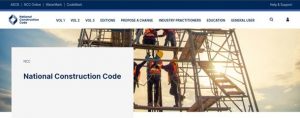Safety is about conformity. Does the language achieve this or create confusion?

Governor David Gibson has been looking at the terms used within the UK Regulatory System, in particular the wording such as “reasonable”, “adequate”, “minimum standards”, and the difficulties relating to what is reasonable for one professional may not be adequate for another or possibly not meet the Regulatory Standards. It was interesting he picked up an item, relating to the National Construction Code of Australia, from Stephen Kip, a Fire Safety Engineer and Building Regulation Consultant, and has reproduced the text for information and discussion.
“The most misunderstood clause in the NCC?
Sometimes what appears simple and clear is actually not. In the performance-based National Construction Code of Australia (NCC) there is a phrase that applies to some, but not all, performance requirements; “to the degree necessary”. In my experience this is the most mis-used clause in the NCC as it is often used to say that compliance of the relevant NCC performance requirement has been achieved “to the degree necessary”. This cannot be correct as NCC Part A2 clearly indicates that all performance requirements are mandatory and must be completely satisfied in all circumstances, and Clause A1.0(3)(c) describes how the term should be applied.
Actually the phrase only indicates that some of the ‘heads of consideration’ in each performance requirement might not apply in certain circumstances and therefore it is possible to completely satisfy that performance requirement even if not all heads of consideration are satisfied.
Examples of where this applies are in the relevant performance requirements for; CP1 Structural stability during a fire (because this is not always required for all buildings for example single storey buildings), DP1 Access for people with a disability (because disabled access will not always be required for all buildings, for example fully automated usually unoccupied buildings), DP5 Fire-isolated exits (because fire-isolated exits will not always be required for all buildings), EP1.1 Fire hose reels (for example where staff should not fight a fire in a building such as a low rise sprinklered hospital) and EP1.4 Automatic fire suppression systems (sprinklers) (for example some uses and fire loads will not always require a sprinkler system to be installed, or could be dangerous [storage or production of potassium and sodium metals, for example).
Where the relevant performance requirement requires all parts of a performance requirement to be satisfied entirely the term ‘to the degree necessary’ is not included. Examples of where this applies are in the relevant performance requirements for; BP1.3 Glass installations at risk of human impact (all glass that could be subject to human impact must be less likely to break or injure), CP5 Behaviour of concrete external walls in a fire (concrete walls that could collapse must not collapse outwards on egressing occupants and fire-fighting personnel), DP2 Safe movement to and within a building (all slips, trips & falls risks must be avoided) and DP4 Exits (all buildings must be at least one exit).
So next time you see a document that states; compliance with the NCC has been achieved to the degree necessary, do not accept it”
Stephen Kip
